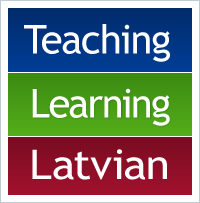The Latvian language
Latvian is the state language of the Republic of Latvia.
Now distribution area of Latvian almost fully coincides with the borders of the State of Latvia. There are about 1.5 million native speakers of the Latvian language nowadays. 1.38 million of speakers live in Latvia, while the rest is found in the USA, Russia, Australia, Canada, the United Kingdom, Germany, Lithuania, Estonia, Sweden, Brazil and even in other countries in a small amount. Moreover, at least half a million representatives of other ethnics in Latvia use the Latvian language as the second one, as well as tens of thousands of people in neighbouring countries, especially in Lithuania.
The world’s population speaks more than 6,700 different languages. About fifteen of these languages are spoken by a half of humanity all over the globe. The other half of the world’s population speaks all other languages. There are only about 200 languages, including Latvian, which are used by over one million speakers. In context of thousands of world’s languages, there are a few elected languages which actually are able to remain in the distant future, and Latvian is among them. The future of the Latvian language is influenced by both the ability of society to protect linguistic diversity in context of globalization and the active participation of Latvian people themselves .
Each country is responsible for all the languages used by its population. Therefore appropriate measures are taken for their preservation and development. The goal of the Latvian language policy is to guarantee the protection of the language to all citizens, with particular care on two unique languages, which arose in this country – the Latvian and Liiv language.
The Latvian language belongs to the Indo-European group of languages. The Baltic group of languages is formed by the Latvian and Lithuanian languages. Plenty of archaic Indo-European linguistic features still exist in Latvian grammar and vocabulary, as well as in Lithuanian. Latvian is close to Lithuanian, however native speakers of the both languages currently are unable to communicate freely. The Estonian language represents another neighbouring country. It is quite different because of belonging to the Finno-Ugric group of languages. Latvian borrows some features from the Liiv language, which is closely related to Estonian. For example, the first syllable of the word usually is stressed. The influence of the Liiv language is found in the vocabulary of the Latvian language.
Over the centuries Latvian has become a rich and tended language, reflecting a wide range of social areas of life.



